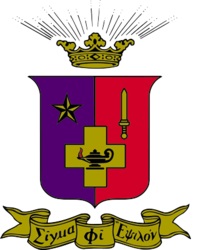In this section we are referring to clothing worn by college students and alumni that represents the fraternity or sorority that they have joined during their time at school. We are not referring to clothing stores in Greece or clothes worn in ancient Greece.
Although this section is not about retailers selling historical clothes from Greece, some types of apparel from ancient times are clearly relevant to fraternities and sororities. For example, togas are important for toga parties at college.
The toga, a distinctive garment of Ancient Rome, was a cloth of perhaps 20 ft (6 m) in length which was wrapped around the body and was generally worn over a tunic. In several countries, the tradition of the toga party has become popular in recent decades, generally at colleges and universities, as illustrated in and possibly inspired by the film Animal House. This practice trades on the exaggerated legend of Roman debauchery, and participants dress in togas that are usually makeshift garments fashioned from bed sheets. As such, these togas often bear little resemblance to the Ancient Roman garment, being flimsier and scantier.
Clothing in ancient Greece primarily consisted of the chiton, peplos, himation, and chlamys. Ancient Greek men and women typically wore two pieces of clothing draped about the body: an undergarment (chiton or peplos) and a cloak (himation or chlamys). Clothes were customarily homemade out of various lengths of rectangular linen or wool fabric with little cutting or sewing, and secured with ornamental clasps or pins, and a belt, or girdle (zone). Pieces were generally interchangeable between men and women.
You may also want to visit our collegiate apparel store directory.
